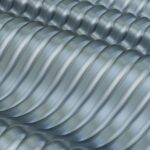Image Commercially Licensed from: Unsplash
Small and medium-sized businesses always want to grow and compete well. They need to use new technologies to do this.
One useful technology is Direct to Film (DTF) printing. It helps businesses print things cheaply, easily, and quickly. This article looks at how DTF printing helps businesses grow. About what is DTF printing?
By studying how DTF printing helps businesses, we can see why it is valuable for businesses that want to succeed in competitive markets.
Cost-Effectiveness of DTF Printing for SMEs
Direct to Film (DTF) printing is a cost-effective option for small and medium-sized enterprises (SMEs) looking for efficient and budget-friendly printing solutions.
In DTF printing, ultraviolet-cured inks are directly applied to film substrates, making it a more economical choice compared to traditional printing methods.
The initial investment for DTF printing equipment and technology is much lower than other printing methods, making it accessible for SMEs with limited budgets.
Also, there are no intermediate steps like plates or screens, which reduces operational costs and overall printing expenses.
Overall, DTF printing is a cost-effective choice for SMEs. It is affordable, uses resources efficiently, and has streamlined operational processes. The advanced nature of DTFLINKO can be fully reflected in commercial brand displays.
Customization for Niche Markets
DTF printing helps SMEs customize printed materials for niche markets. It allows SMEs to tailor their printing output to meet the preferences and requirements of different market segments.
SMEs can use DTF printing to create intricate and personalized designs on various substrates. They can meet the specific demands of niche markets with precision. This adaptability applies to different products, from promotional items to packaging.
SMEs can position themselves as providers of specialized offerings. Personalizing printed materials increases customer engagement. Niche market consumers want products that align with their interests and preferences. DTF printing lets SMEs efficiently fulfill these demands. They can achieve a high level of detail and gain a competitive edge in markets that value customization.
DTF printing also allows SMEs to create limited-edition or exclusive runs. This appeals directly to niche audiences with discerning tastes. This tailored approach enhances customer loyalty and helps SMEs stand out from competitors.
SMEs can navigate the complexities of niche markets and meet the demand for personalized and distinctive printed materials.
Quick Turnaround Time and Production Efficiency
Direct to Film (DTF) printing emerges as a strategic asset for small and medium-sized enterprises (SMEs) by significantly enhancing production efficiency and ensuring a quick turnaround time. The technology’s streamlined workflow and direct printing process contribute to expeditious production cycles, enabling SMEs to meet tight deadlines and respond promptly to market demands.
The absence of intermediary steps, such as the need for plates or screens, streamlines the setup process in DTF printing.
Additionally, the rapid curing of ultraviolet inks used in DTF printing further contributes to efficiency. The instantaneous drying process eliminates the need for extended drying periods, allowing printed materials to proceed seamlessly through subsequent stages of production. This efficiency not only accelerates the overall printing process but also enhances the speed at which SMEs can deliver finalized products to their clientele.
Future Trends
Anticipating the future trends in Direct to Film (DTF) printing involves a nuanced understanding of evolving technologies and industry dynamics. Several factors are poised to shape the trajectory of DTF printing in the coming years.
One prominent trend is the continuous refinement of DTF printing technology. Ongoing research and development efforts are likely to focus on improving ink formulations, curing processes, and overall print quality. These advancements aim to push the boundaries of precision, color fidelity, and application versatility, consolidating DTF printing’s position as a state-of-the-art printing solution.
Furthermore, the accessibility of DTF printing technology is expected to expand. As the technology matures and becomes more standardized, DTF printing is likely to become more user-friendly and available to a broader range of businesses, including small enterprises seeking cost-effective and high-quality printing solutions.
In conclusion, future trends in DTF printing revolve around continuous technological advancements, integrations with emerging technologies, a focus on environmental sustainability, and increased accessibility.
Published by: Martin De Juan

















